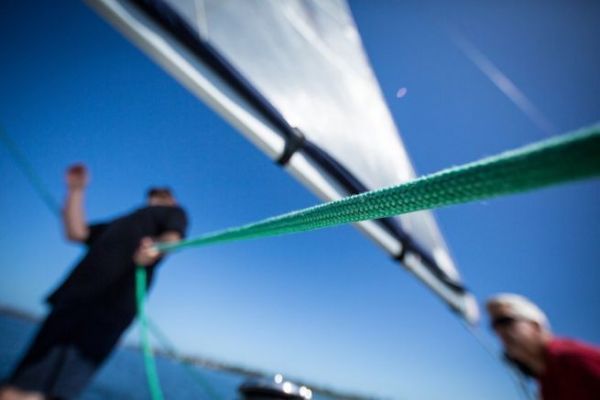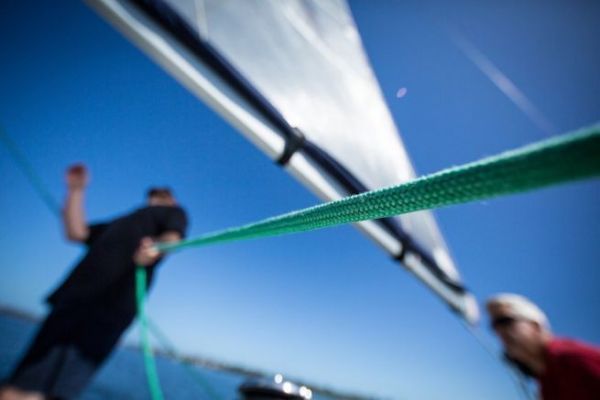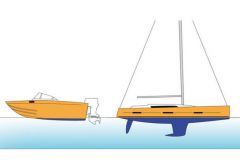On our sailboats, the tack is probably the most familiar crew maneuver. When cruising or racing, you can't escape it for long. As a reminder, the tacking maneuver consists of crossing the "upwind" zone to receive the wind on the other side. A sailboat that cannot sail with the wind upright must therefore tack on either side of the wind's axis.
In a perfect world, we would leave the harbor and the wind would carry us... downwind. Unfortunately, this ideal is far from the cruel reality which sometimes seems to be determined to make the wind blow against us. This is why we keep tacking.
As sailors have to face the wind, we have developed sailboats and navigation techniques to win the "battle" of the windward gain . It's always a tricky battle, so you have to be careful not to ruin your efforts with catastrophic tacking.
As is often the case on a sailboat, the success of the tack depends largely on the preparation in order to avoid possible problems that would ruin the maneuver and the hard-won windward gain.
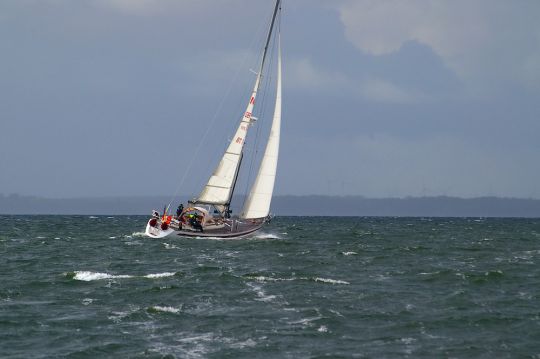
Preparing the crew for the tack
Before starting the maneuver, the skipper will remind the whole crew of the tacking procedure and the role of each person. For those who are not in the cockpit, they will have to be told which way to go to reach the other side.
When cruising, it is always useful to remember these procedures which are not repeated endlessly as in a regatta. The skipper should also point out the future destination, so that the less experienced will be less lost in the wind.
We then look for things that can disrupt the maneuver, like that can in the cockpit, the open bag of chips or the boiling water in the lazarette. These things have no business being part of a tacking procedure.
Preparation of the maneuvers
We will first look at the passage of the sheets, especially the windward one, which will soon come into action. It is necessary to check that nothing hinders it, neither a deck panel nor a cleat... It can be put slightly under tension to control its course.
Then, we are going to look at the preparation of the sheet under the wind in tension and especially at its dormant part. Because at the moment of the shock, the sheet must be able to go without blocking on a "cocotte" or a peg which drags by there.
The navigator will announce a new course for the tack exit. For less experienced helmsmen, it is a good idea to give them a 90-degree angle to the wind to aim at.
When everything seems to be ready, before starting the maneuver, we will set up a countdown to synchronize the crew during the tack. The maneuver is announced and everyone is asked to respond. Ready to tack? (response from all the crew members) 4, 3, 2, 1 we're tacking!
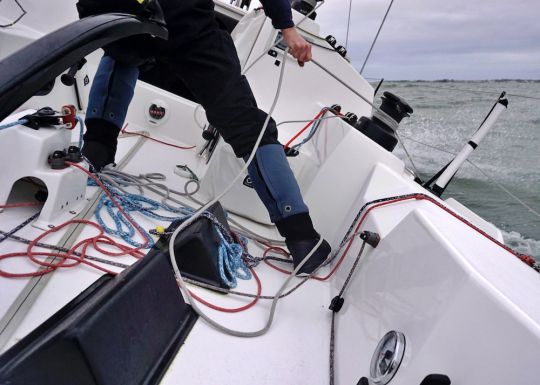
Prepare the clutches
On a cruising boat, one crew member will be asked to stand by to ease the headsail and another to stand by to trim, these are the tackers.
Downwind
Before tacking, the genoa sheet must be prepared to be eased. Most of the time, it is held on the winch self-tailing. Before removing this blocking trick, the crew member will grip the sheet firmly to the winch with one hand, which will keep the line blocked on the winch head. With the other hand, he can remove the rope from the self-tailing.
The listener is ready to be dropped, at the right moment, it will be enough to remove the last turns and let the listener go as fast as possible. When the tension in the sheet is zero, the job is done.
To the wind
In anticipation of the tack, prepare the sheet on the windward winch with at least 3 turns (clockwise). This is not the time to use self-tailing, which would only add friction to the maneuver. It's almost time to tack, you must be ready to tack as soon as possible.
Once the sheet is under tension, i.e. when you can no longer pull with the force of your arms, you will make an additional turn before turning the tip in the self-tailing to free your two hands to use them on the crank.
We will then look in detail at the tacking turn and its timing.
